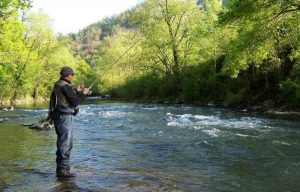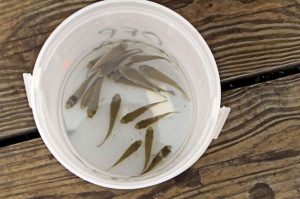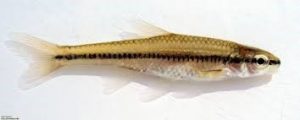2022-Mar-28
New Live Bait Regulations for 2022
The Live Bait Industry is Significant
 Supplying bait is big business in Ontario and many anglers continue to support
Supplying bait is big business in Ontario and many anglers continue to support
this industry by purchasing minnows, leaches, crayfish, and other live bait species as alternatives to using artificial baits and tied flies.
Potential Risks of Using Live Bait
 Historically, Ontario’s fishing regulations, were relatively unrestricted. For years, anglers faced few controls as to where bait was purchased, including how and where it was used and disposed of. Using live bait, considered illegal today, may have caused the spread of infectious fish diseases such as viral hemorrhagic septicemia (VHS). Disposing of live and dead bait fish, fish eggs, soil from bait containers, or other material into the water may also have jeopardized the ecology of lakes and rivers for future fishing.
Historically, Ontario’s fishing regulations, were relatively unrestricted. For years, anglers faced few controls as to where bait was purchased, including how and where it was used and disposed of. Using live bait, considered illegal today, may have caused the spread of infectious fish diseases such as viral hemorrhagic septicemia (VHS). Disposing of live and dead bait fish, fish eggs, soil from bait containers, or other material into the water may also have jeopardized the ecology of lakes and rivers for future fishing.
New Bait Management Zones
 As part of Ontario’s work on developing regulations to support sustainable bait management, on January 1, 2022, the Province created four new Bait Management Zones (BMZ’s). Anglers, wanting to purchase and fish with live bait in one of the Northeastern, Central or Southern BMZ’s bordering on the North Channel and Georgian Bay, are now required to comply with the following restrictions:
As part of Ontario’s work on developing regulations to support sustainable bait management, on January 1, 2022, the Province created four new Bait Management Zones (BMZ’s). Anglers, wanting to purchase and fish with live bait in one of the Northeastern, Central or Southern BMZ’s bordering on the North Channel and Georgian Bay, are now required to comply with the following restrictions:
- Anglers choosing to fish outside of the BMZ where their principal residence is located are required to retain a receipt for live bait and leeches purchased from a commercial bait license holder in the BMZ where they’re fishing.
- If Anglers fishing within a BMZ where their principal residence is located purchase live bait and leeches locally from a licensed operator, they do not need to retain a receipt.
- Anglers are not allowed to move live or dead bait fish and leeches from one BMZ to another BMZ – the exception being that anglers are allowed to move bait from any of the three Northeastern, Central and Southern BMZ’s to an adjacent Great Lake. However, Anglers are not allowed to move bait from a Great Lake to an adjacent BMZ.
- Ontario and Canadian Anglers having a valid Sport or Conservation Fishing Licence choosing to net locally sourced baitfish, leeches, and crayfish for personal use must do so in their home BMZ. They do not need to
 provide documentation but they are subject to restrictions on the number and type of fish species collected, as follows: anglers harvesting (netting) or purchasing live bait are allowed to have in their possession no more than 120 baitfish, 120 leeches and 36 crayfish and be restricted to a permitted list of 48 fish species. The list of permitted baitfish can be found here.
provide documentation but they are subject to restrictions on the number and type of fish species collected, as follows: anglers harvesting (netting) or purchasing live bait are allowed to have in their possession no more than 120 baitfish, 120 leeches and 36 crayfish and be restricted to a permitted list of 48 fish species. The list of permitted baitfish can be found here. - Anglers are required to use or dispose of commercially purchased live bait and leeches within two weeks and retain a receipt where applicable showing where bait was purchased and are not allowed to empty the contents of bait containers within 30 metres of a lake or river. As an alternative, anglers can freeze bait for later use.
- Commercial bait operators must now take a training course, administered by the Ministry of Natural Resources and Forestry (MNRF) to learn about risks of harvesting and selling live bait, avoiding non-targeted species, and using MNRF-prescribed logbooks to document bait transactions.
In summary, Ontario’s recreational fisheries create employment and support local tourism. These new regulations, controlling the harvesting, buying, selling, and moving of live and dead bait fish and leeches, should enable fewer opportunities for spreading invasive bait fish species and allowing them passage into Georgian Bay, the North Channel, and its tributaries. The regulations are now active and should address many of the concerns raised in Georgian Bay Association’s 2020 submission to the province including those of the Federation of Anglers and Hunters. With bait regulations now law, anglers are encouraged to report violations to MNRF by calling toll-free 1-877-847-7667.
Information on Ontario’s new 2022 fishing regulations can be found here.
